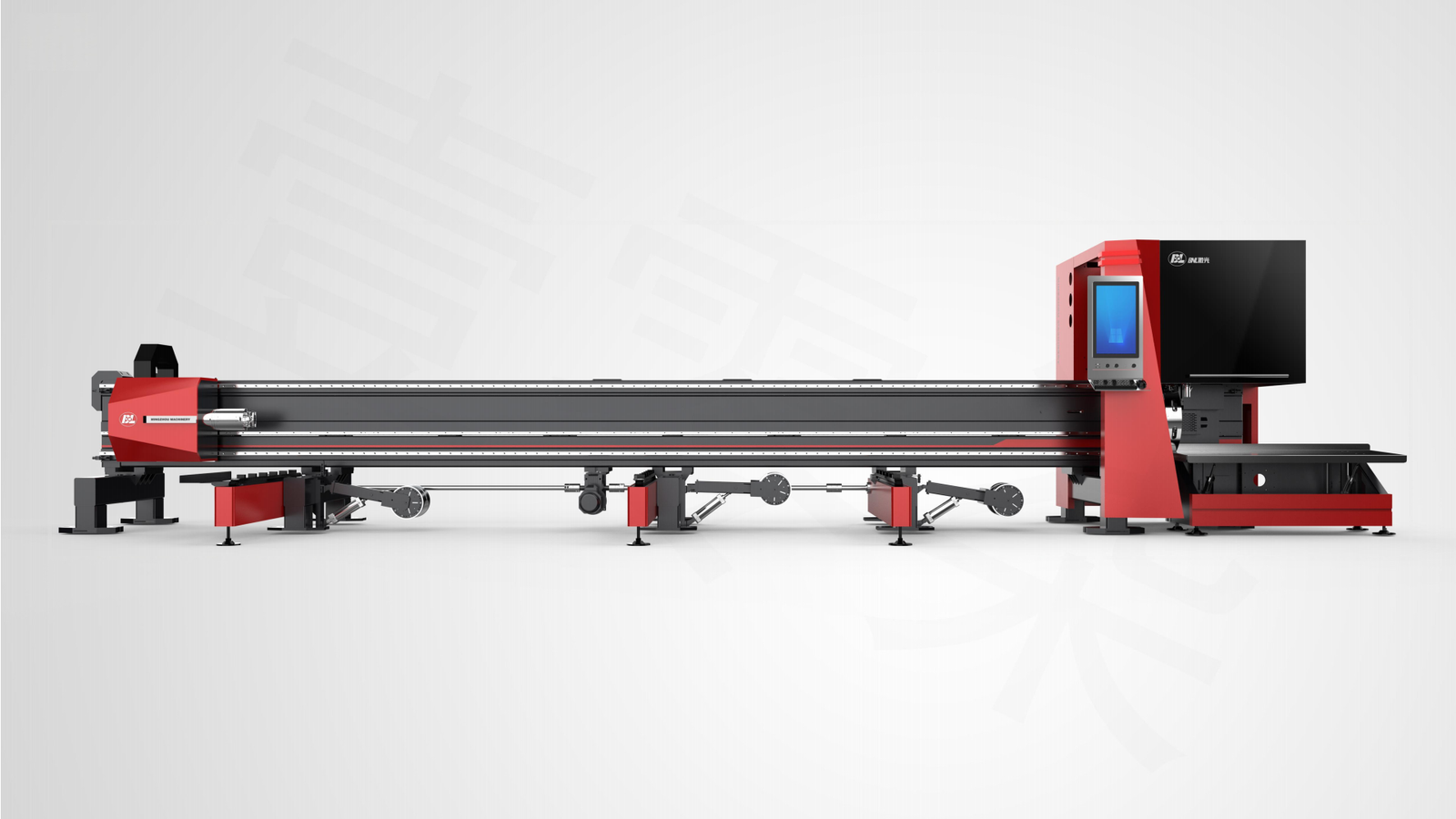What Is the Maintenance Schedule for a Metal Tube Cutting Machine?
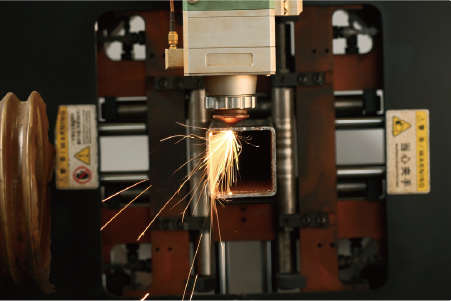
Maintaining a metal tube cutting machine can feel daunting, leading to costly breakdowns and lost production. Are you tired of unexpected downtime disrupting your projects and profitability? Implementing a structured maintenance schedule is crucial to ensure your equipment runs smoothly, extending its lifespan and maximizing efficiency for your business.
A comprehensive maintenance schedule for a metal tube cutting machine involves daily checks, weekly cleanings, monthly inspections, quarterly overhauls, and annual professional servicing, ensuring optimal performance, minimizing downtime, and extending the machine's operational life.Adhering to these routines addresses wear and tear, preventing minor issues from escalating into major, expensive repairs.
As Eric Liu from MZBNL, with 25 years in metal fabrication, I’ve seen firsthand how a disciplined maintenance approach differentiates thriving operations from those constantly battling breakdowns. It’s not just about fixing what’s broken; it’s about strategically preventing issues, ensuring uninterrupted production, and protecting your investment. Let’s explore how proactive care can transform your metal fabrication capabilities, providing the reliability and precision your business demands. This preventative mindset is vital for companies like Ahmed Al-Farsi’s, who prioritize automated solutions and seek long-term operational stability.
From my vantage point at MZBNL, a high-tech enterprise holding 30+ patents, I've observed that the success of modern metal tube cutting operations hinges significantly on diligent machine maintenance, extending beyond mere troubleshooting to a proactive, critical framework. The industry landscape, marked by escalating demands for precision and efficiency, means that machines like our advanced laser tube cutting systems1 are not just tools but critical assets requiring strategic care. For instance, neglecting proper lubrication can accelerate wear on vital components, potentially reducing the machine's lifespan by 20-30% and leading to unscheduled downtime that costs businesses an average of $22,000 per hour across manufacturing sectors, according to a recent report by Deloitte. We’ve advised countless clients, including our 4000+ global partners, that while initial machine investment is substantial, the true return on investment is realized through consistent, well-executed maintenance programs. This not only safeguards the machine’s intricate mechanisms, such as the high-precision linear guides and sophisticated laser optics, but also ensures the consistent quality of output—a non-negotiable for industries like automotive and architectural metalwork. By approaching maintenance with a critical eye, considering both the immediate operational impact and the long-term strategic value, companies can transition from reactive repairs to predictive reliability, directly influencing their bottom line and competitive edge.
What daily maintenance tasks are required for a metal tube cutting machine?
Unexpected machine failures can grind production to a halt, costing valuable time and resources. Are you struggling with the unpredictability of your machine’s performance, leading to missed deadlines and frustrated customers? Establishing clear daily maintenance routines is the first line of defense against these operational disruptions, ensuring your equipment is ready to perform consistently.
Daily maintenance tasks for a metal tube cutting machine typically include inspecting the cutting head, cleaning the nozzle and protective lens, checking gas pressure and levels, verifying coolant levels, inspecting chucks and guides for debris, and performing a quick visual check for any loose parts or abnormalities. These brief, routine checks are fundamental for optimal function and immediate identification of potential issues, preventing minor problems from escalating.
From my experience at MZBNL, I often tell our clients, like Ahmed Al-Farsi in the UAE, that daily maintenance is the bedrock of efficient operation, akin to a pilot's pre-flight checklist. It's about building a habit of vigilance that pays dividends in consistent performance and extended machine life. My team emphasizes that these quick checks, often taking just a few minutes, are not just about preventing breakdowns but also about maintaining the precision our machines are known for. For example, our No-CAD Operating System, which simplifies operations by removing the need for complex 3D drawings, inherently reduces potential human errors that could lead to operational stress on the machine, thereby indirectly supporting a more stable daily environment for routine checks. This ease of use means operators can focus more on the machine's physical state rather than getting bogged down in complex software.
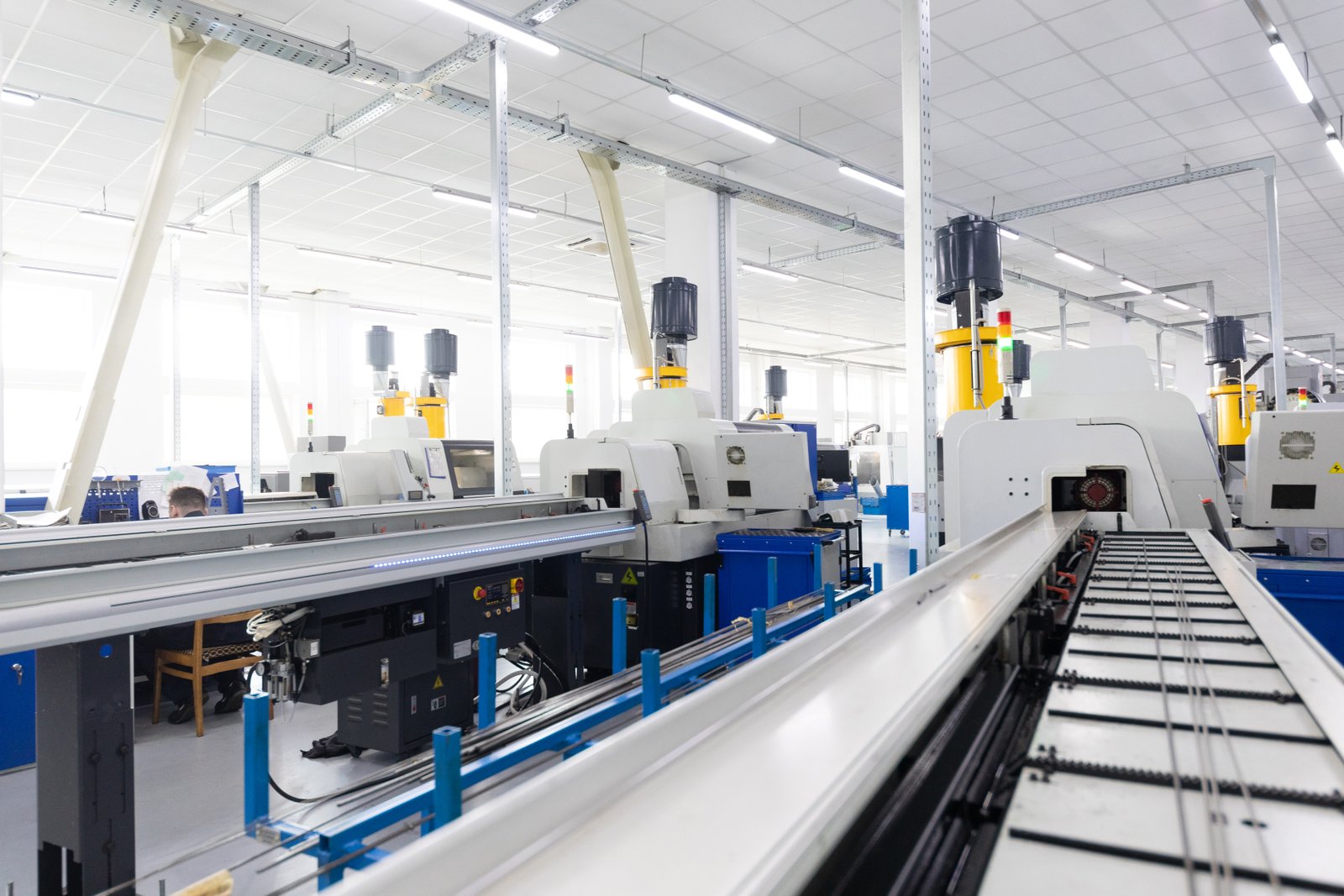
Essential Pre-Operation Checks and Their Impact
Before any cutting commences, a series of essential pre-operation checks are paramount to ensure both machine readiness and operator safety. My team at MZBNL always stresses that this foundational step, though seemingly minor, drastically impacts daily operational efficiency and output quality. A primary focus is the cutting head: ensuring the nozzle is free from spatter and that the protective lens is clean and scratch-free. Dirty or damaged optics can lead to inconsistent beam quality, resulting in poor cut edges or, worse, irreversible damage to the laser resonator itself. For instance, a microscopic scratch on the protective lens can cause beam deflection, leading to a loss of cutting power by as much as 15-20% and significantly increasing energy consumption.
Moreover, verifying gas pressures (oxygen, nitrogen, or compressed air, depending on the material) and coolant levels is non-negotiable. Insufficient gas pressure can result in incomplete cuts and excessive dross, while low coolant can lead to overheating of the laser source, potentially reducing its lifespan from an expected 20,000 hours to as little as 10,000 hours if consistently operated above optimal temperatures. Our Front-Feeding Innovation, which streamlines material handling, helps operators maintain a cleaner work area around the machine's front, making these daily checks more accessible and less time-consuming compared to traditional side or rear-loading systems that might obscure parts of the machine.
Beyond the cutting path, inspecting the chucks and guides for any debris or signs of wear is critical. Loose material or metal shards can impede the smooth movement of the tube, causing inaccurate cuts or even machine jams. We recommend a quick wipe-down and visual check to ensure nothing obstructs the precise movement of components. These steps, when consistently applied, significantly reduce the likelihood of mid-shift interruptions and maintain the high precision our machines, like those sought by Ahmed Al-Farsi for his architectural metalwork, are designed to deliver.
Post-Operation Cleanup and Best Practices
The end of the day isn't just for shutting down; it's an opportune moment for a thorough yet quick cleanup that safeguards the machine for its next use. The accumulation of metal dust, slag, and fumes is inevitable in metal cutting, and if left unchecked, these particles can infiltrate sensitive components, leading to corrosion, electrical shorts, or mechanical seizure. Our Zero-Waste Tail Material Innovation minimizes leftover material, meaning less debris scattered around the cutting area, simplifying cleanup significantly. This design, which cuts from the rear chuck as the origin, naturally reduces the amount of residual scrap and dust that needs to be cleared.
A diligent post-operation routine involves vacuuming the cutting bed, clearing any remaining scrap, and wiping down the machine exterior. Special attention should be paid to the area around the chucks and guide rails, as fine metal dust can act as an abrasive, accelerating wear on moving parts if not removed. My team has seen cases where neglecting daily cleanup led to a 5% increase in friction on guide rails within just a few months, necessitating premature replacement.
Furthermore, ensuring all safety features are in good working order, such as emergency stops and interlocks, is a final, critical step. This doesn't just protect the machine; it protects the operators. By performing these tasks consistently, businesses can ensure their laser tube cutting machine remains in prime condition, ready for the next shift without the carry-over of issues that compound over time. This routine fosters a culture of care, essential for high-volume production environments.
Real-Time Monitoring and Anomaly Detection
Modern metal tube cutting machines, especially those integrated with smart and digitalized systems like MZBNL's, offer valuable real-time data that can be leveraged for daily anomaly detection. Operators should be trained not only to perform physical checks but also to interpret the machine's digital feedback. Unusual noises, vibrations, unexpected power fluctuations, or deviations in cutting parameters displayed on the control panel are all indicators that something might be amiss.
For instance, a slight increase in motor current readings might signal increased friction on a moving axis, indicating a need for lubrication or a potential bearing issue before it becomes catastrophic. Similarly, consistent variations in cut quality, even subtle ones, could point to a degrading lens or a minor misalignment. At MZBNL, we've incorporated intuitive diagnostics into our machines, reducing the skill threshold for operators, allowing them to quickly identify and report issues that might otherwise go unnoticed. This is particularly beneficial for clients like Ahmed, who seeks ease of operation and aims to reduce reliance on highly specialized CAD operators.
Empowering operators with the knowledge to recognize these subtle signs allows for immediate intervention, often preventing minor adjustments from escalating into costly repairs or prolonged downtime. This proactive real-time monitoring, combined with physical checks, forms a robust daily maintenance strategy. It is far more cost-effective to address a small issue today than to wait for it to manifest as a major breakdown tomorrow, impacting your entire production line and delivery schedules.
Daily checks prevent major breakdownsTrue
Routine inspections catch minor issues before they escalate into costly repairs, as explained in the daily maintenance section.
Coolant levels only need weekly checksFalse
Coolant levels should be checked daily to prevent laser source overheating, which can halve its lifespan.
What weekly maintenance procedures should be performed on a metal tube cutting machine?
Are you experiencing a gradual decline in cut quality or unexplained minor glitches with your metal tube cutting machine? If daily checks aren't quite catching everything, leaving you with nagging concerns about long-term performance, it's time to elevate your routine. Implementing thorough weekly maintenance procedures is crucial to address deeper wear and tear, preventing a slow decay in efficiency and precision.
Weekly maintenance procedures for a metal tube cutting machine encompass a more detailed cleaning of optical components, thorough lubrication of all moving parts, inspection and adjustment of linear guides, checking and cleaning of cooling system filters, and a comprehensive review of all pneumatic and electrical connections. These proactive steps ensure consistent high performance, extend component lifespan, and detect subtle issues before they impact productivity.
In my years at MZBNL, I’ve seen countless times how neglecting weekly checks can lead to a snowball effect of problems. It’s a bit like giving your car a regular tune-up; you might not notice an immediate difference, but over time, it performs better, lasts longer, and avoids expensive repairs. For a client like Ahmed Al-Farsi, whose business relies on precision and continuous operation, these weekly routines are non-negotiable. They ensure that the high-speed, high-precision cutting capabilities of our machines remain consistent, minimizing the likelihood of operator turnover due to frustrating equipment issues and supporting his goal of expanding his business in architectural metalwork and vehicle parts.
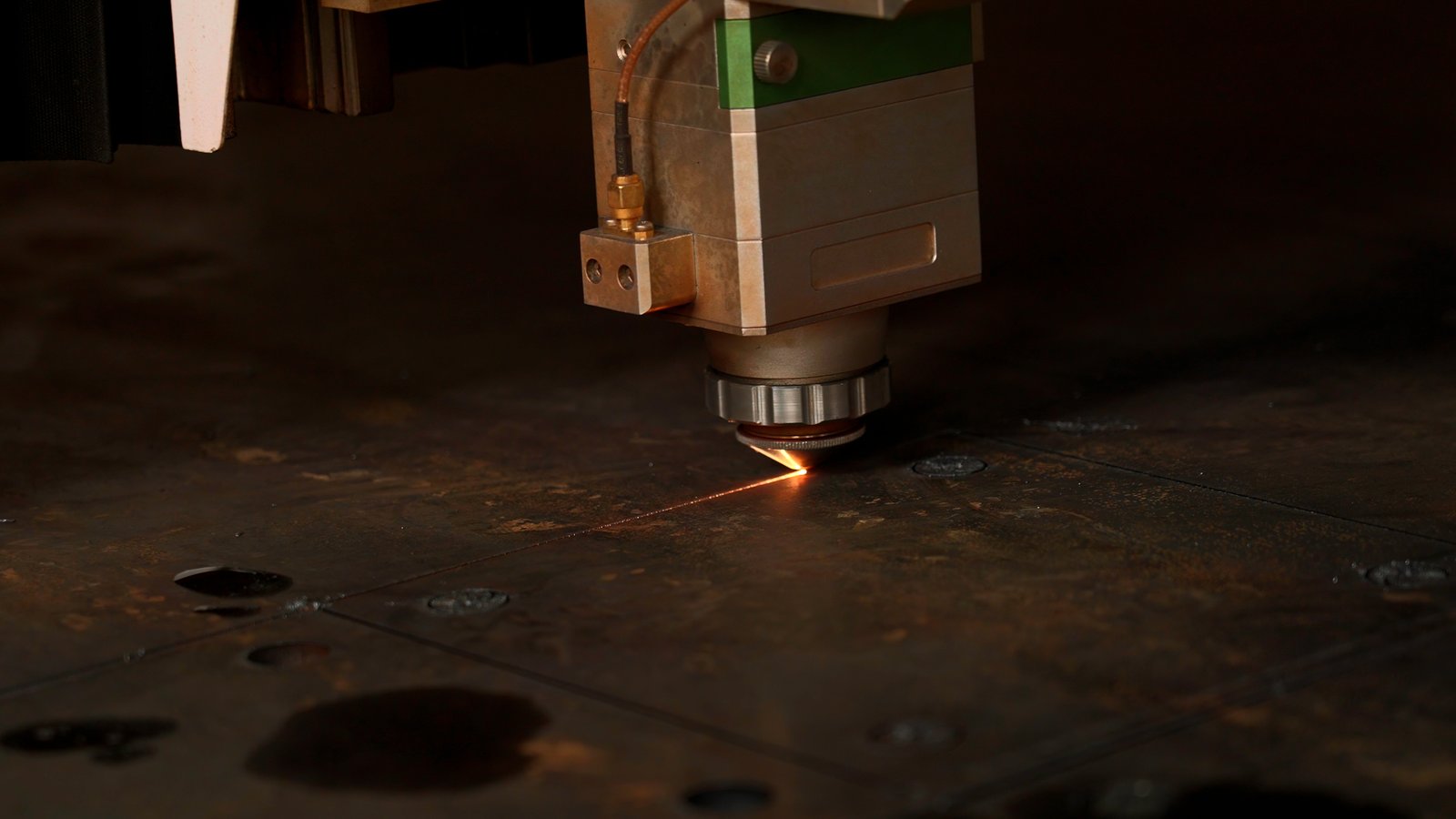
Deep Cleaning Protocols for Critical Components
While daily cleaning focuses on surface debris, weekly maintenance demands a deeper dive, particularly for the machine's critical components. The optical path, including lenses and mirrors, is paramount for laser cutting precision. Even tiny airborne particles, if allowed to accumulate, can scatter or absorb laser energy, leading to distorted beam profiles, reduced cutting power, and ultimately, poor edge quality or even damage to expensive optics. My team at MZBNL advises a meticulous cleaning of these components using specialized optical cleaning solutions and lint-free wipes. This process is crucial to maintain the integrity of the laser beam delivered from the resonator to the cutting head.
Furthermore, the fume extraction system requires weekly attention. Filters can become clogged with metal dust and particulate matter, reducing their efficiency. A clogged filter means more fumes linger in the cutting area, which can contaminate optical components faster and pose health risks to operators. Regular cleaning or replacement of these filters ensures optimal air quality and protects sensitive electronics from corrosive elements. In our experience, neglecting fume extraction cleaning can reduce system efficiency by 30% within a month, directly impacting both machine cleanliness and operator well-being.
Lastly, the cutting bed and slag collection areas need a comprehensive cleanup. The Zero-Waste Tail Material Innovation in MZBNL machines significantly reduces overall scrap, simplifying this task. However, any remaining small pieces of metal or dross can interfere with material placement or cause uneven cutting if not regularly cleared. A thorough vacuuming and manual removal of stubborn slag from the slats or supporting grid are essential to maintain a stable cutting surface and prevent damage to the material being processed.
Lubrication and Alignment Checks
Proper lubrication is the lifeblood of any mechanical system, and a metal tube cutting machine is no exception. Weekly maintenance should include lubricating all linear guides, ball screws, and moving axes according to the manufacturer's specifications. These components are subjected to significant stress and friction during high-speed operation, and inadequate lubrication can lead to accelerated wear, increased energy consumption, and jerky movements that compromise cutting accuracy. Using the correct type and amount of lubricant ensures smooth, precise motion, preserving the machine's mechanical integrity.
Beyond lubrication, a visual inspection of alignment for linear guides and chucks is crucial. While full calibration is typically a less frequent task, weekly checks can spot early signs of misalignment, such as uneven wear patterns on guide rails or slight deviations in the chuck's gripping mechanism. For example, if a chuck is slightly misaligned, it can put uneven pressure on the tube, leading to ovality issues in the cut or slippage during high-speed rotation. Our Front-Feeding Innovation ensures that tubes are consistently and accurately loaded, which in turn reduces the chances of initial misalignment issues at the feeding stage, but the chuck's internal alignment still needs attention.
Early detection of these issues allows for minor adjustments before they develop into major problems requiring extensive repair or component replacement. For a business like Ahmed Al-Farsi’s, which handles large volumes of metal tubes for architectural and automotive parts, maintaining precise alignment is paramount to ensure consistent product quality and avoid material waste—a key factor in profitability.
Software and System Health Verification
In an increasingly digitalized manufacturing environment, the health of a machine's software and control system is as critical as its mechanical components. Weekly maintenance should include a review of system logs for error messages or performance anomalies that might not be immediately apparent during daily operation. Many modern machines, including MZBNL's smart systems, log operational data that can highlight intermittent issues or emerging trends.
This also extends to ensuring that all software is up to date and that backups of critical machine parameters and programs are made. Software updates often include performance enhancements, bug fixes, or new functionalities that can improve efficiency or troubleshoot known issues. For instance, an updated control algorithm might optimize cutting speeds for specific materials, leading to a 5% improvement in cycle time.
Furthermore, a quick check of all electrical connections for tightness and signs of corrosion is advisable. Loose connections can lead to intermittent power supply, causing unpredictable machine behavior or even damage to sensitive electronic components. By regularly verifying the integrity of both the digital and electrical backbone of the machine, operators can ensure that the machine's "brain" is functioning optimally, providing reliable control and diagnostics, thus supporting continuous high-precision operation critical for demanding clients across Southeast Asia, Europe, and North America.
| Component Group | Weekly Action | Expected Benefit | Typical Outcome of Neglect |
|---|---|---|---|
| Optics & Lasers | Deep lens/mirror cleaning | Consistent beam quality, extended optic lifespan | Reduced cutting power, poor cut quality, costly optic damage |
| Mechanical Parts | Linear guide lubrication | Smooth motion, reduced friction, extended component life | Increased wear, inaccurate cuts, premature bearing failure |
| Fume Extraction | Filter cleaning/inspection | Optimal air quality, protected electronics | Contaminated optics, health risks, reduced system efficiency |
| Cooling System | Filter & coolant quality check | Stable laser temperature, efficient operation | Overheating, reduced laser lifespan, system shutdown |
| Electrical/Control | Connection check, software review | Stable power, reliable control, updated features | Intermittent errors, component damage, operational instability |
Weekly cleaning prevents optic damageTrue
Regular optical cleaning removes particles that could scatter laser energy and damage expensive components.
Lubrication affects cutting accuracyFalse
Proper lubrication directly impacts motion smoothness and positioning precision, which are critical for accurate cuts.
What monthly inspections are necessary for optimal performance of a metal tube cutting machine?
Are you noticing subtle shifts in your machine's precision, or perhaps longer processing times for familiar tasks? When daily and weekly routines aren't enough to prevent deeper performance degradation, it's a sign that more comprehensive monthly inspections are needed. Neglecting these can lead to creeping inefficiencies and even major component failures, eroding your profitability.
Monthly inspections for a metal tube cutting machine involve a thorough examination of the laser resonator, detailed cleaning of optical components, checking and calibration of gas supply systems, comprehensive inspection of the chiller unit, assessment of all safety interlocks, and a more in-depth review of mechanical tolerances and alignments. These detailed checks proactively identify and rectify developing issues, ensuring the machine maintains peak operational performance and prevents costly major breakdowns.
From my perspective at MZBNL, the monthly inspection isn’t just a checklist; it's a critical review of the machine's core systems, ensuring its long-term health and precision. It's the point where you catch those deeper, insidious issues before they become catastrophic. For a high-volume client like Ahmed Al-Farsi, whose business relies on consistent output for architectural and automotive parts, these inspections are vital. They ensure that our Laser Tube Cutting Machine continues to deliver the high-speed, high-precision results he expects, minimizing downtime and supporting his business expansion with reliable, cutting-edge technology. This systematic approach is why MZBNL can proudly stand by its 25 years of experience and 4000+ global clients.
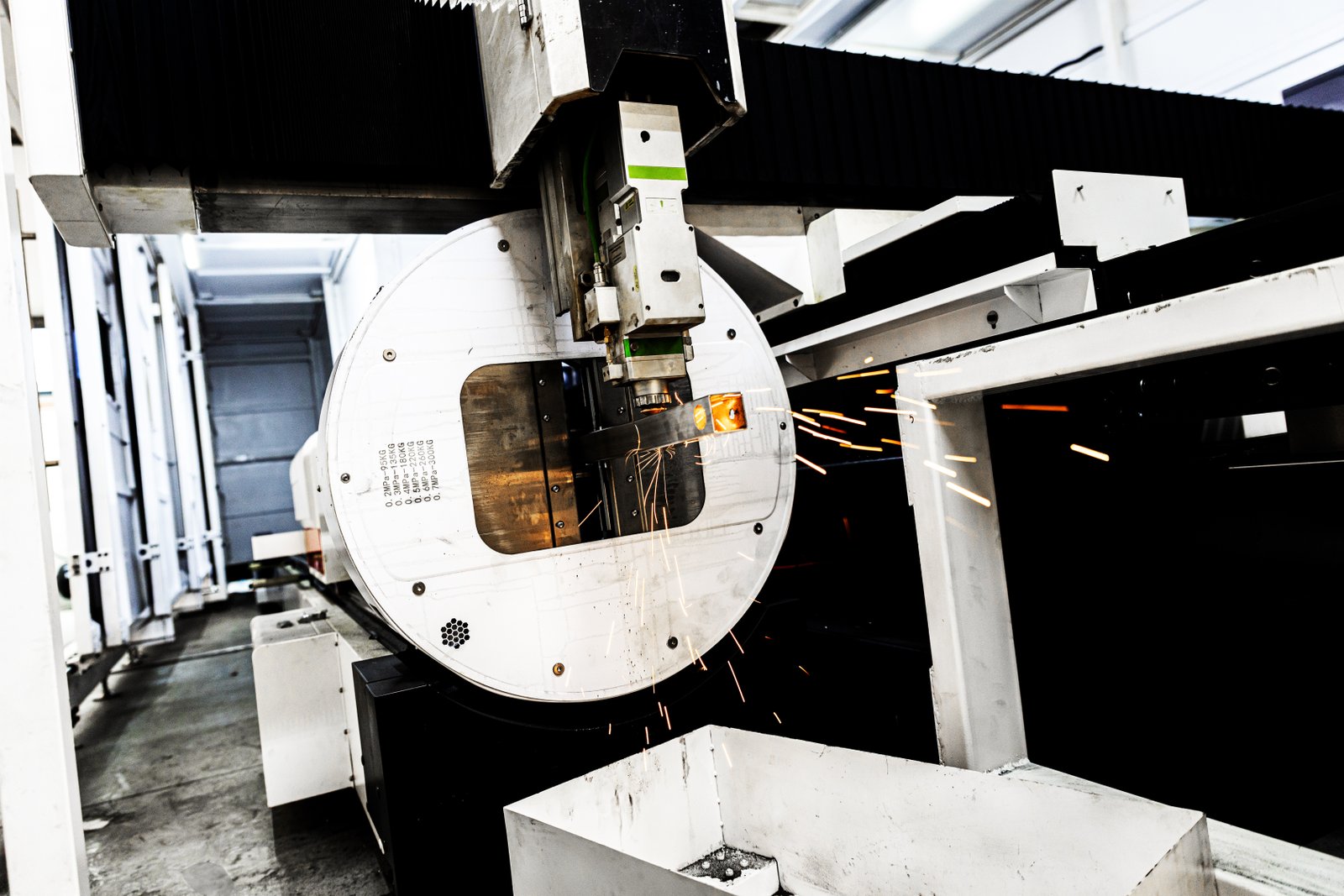
Comprehensive Optical Path and Laser Source Inspection
The heart of a laser tube cutting machine lies in its laser source and the integrity of its optical path1. Monthly inspections should include a comprehensive examination of all lenses, mirrors, and the laser resonator itself. This goes beyond a simple wipe-down; it involves carefully checking for any signs of pitting, clouding, or thermal stress on the optics that might not be visible during weekly cleanings. For instance, a subtle thermal expansion in a focusing lens, if undetected, can lead to a gradual shift in the focal point, resulting in wider kerfs, increased dross, and a general decline in cut quality, potentially increasing material waste by 5-10% on intricate parts.
The laser resonator, while often sealed, requires visual inspection for any external anomalies or unusual noises. If your machine utilizes a fiber laser, checking the fiber optic cable for kinks or damage is crucial, as this can degrade beam quality or even cause a complete power loss. We've seen instances where slight vibrations from continuous operation led to minor shifts in mirror alignment over time, requiring a re-calibration that, if ignored, would lead to uneven laser power distribution and a significantly reduced cutting efficiency. MZBNL's commitment to high-speed and high-precision cutting means that every component in the optical path must perform flawlessly, and monthly checks are pivotal in maintaining this standard.
This deep optical inspection extends to ensuring the integrity of the laser beam's protective enclosure. Any breaches could allow dust or contaminants to enter, damaging sensitive internal components. By meticulously verifying these elements, you're safeguarding the most expensive and critical part of your laser cutting machine, ensuring consistent beam quality and extending the life of your laser source, which represents a significant portion of the machine's overall cost.
Mechanical System Integrity and Calibration
Beyond the laser, the mechanical components that govern movement and positioning are equally vital for precision. Monthly inspections should delve into the integrity of the machine's mechanical structure, including checking for loose bolts, worn bearings, or signs of excessive vibration in the gantry, chucks, and feed systems. While daily and weekly checks might catch obvious issues, monthly reviews allow for a more detailed assessment, often involving the use of specialized tools for measuring backlash or assessing parallelism of linear axes.
For instance, minute deviations in the parallelism of linear guides, if left unaddressed, can lead to uneven wear on bearings and increased motor strain, reducing the operational life of these components by up to 25%. This directly impacts cutting accuracy, particularly when processing long tubes or intricate geometries. Our Front-Feeding Innovation is designed for consistent and smooth material handling, which helps reduce initial stress on the feeding mechanisms, but even the best designs benefit from regular mechanical integrity checks. We frequently educate our clients that a small investment in monthly calibration checks can prevent major overhaul costs down the line.
Furthermore, a comprehensive check of the automatic loading and unloading mechanisms, if present, is essential. This includes verifying the integrity of pneumatic cylinders, hydraulic lines, and robotic arms. For clients like Ahmed Al-Farsi, who seek automated solutions, the seamless operation of these systems is critical for maintaining high throughput. Ensuring that these components are functioning within their specified tolerances prevents material jams, reduces cycle times, and minimizes the risk of damage to the machine or the workpiece.
Fluid and Filtration System Management
The performance of a metal tube cutting machine is heavily reliant on the health of its various fluid systems. Monthly inspections must include a thorough check of the chiller unit, which is responsible for cooling the laser source and optical components. This involves not only checking coolant levels but also assessing coolant quality (for clarity and absence of algae), cleaning the chiller's air filters, and verifying its temperature set points and actual operating temperatures2. An inefficient chiller can lead to laser overheating, significantly impacting its performance and lifespan. We've seen instances where neglected chiller filters caused a 10% drop in cooling efficiency, leading to the laser operating at higher-than-optimal temperatures.
In addition to the chiller, hydraulic fluid levels and quality (if applicable for chucks or clamping systems) should be checked, along with pneumatic air quality. Contaminated hydraulic fluid can lead to sluggish chuck operation, while moisture or oil in the pneumatic lines can damage air cylinders and valves. Regularly draining condensate from air tanks and replacing air filters ensures clean, dry air supply, critical for the precise operation of pneumatic components.
This comprehensive fluid and filtration management is crucial for the longevity and reliability of the entire system. Ignoring these aspects can lead to a cascade of problems, from erratic machine behavior to the premature failure of expensive components. By dedicating time each month to these fluidic lifelines, you ensure your metal tube cutting machine operates at peak efficiency, preventing issues that could otherwise lead to costly downtime and lost production.
Monthly inspections prevent major breakdownsTrue
Comprehensive monthly checks identify developing issues before they escalate into costly failures.
Weekly cleaning replaces optical inspectionsFalse
Monthly inspections require detailed examination of optical components that weekly cleanings can't address.
What are the quarterly maintenance checks essential for a metal tube cutting machine?
Are you consistently missing the mark on complex projects, or is your machine showing signs of performance degradation despite regular weekly and monthly checks? If minor adjustments aren't resolving deep-seated issues, it's time for a more profound analysis. Quarterly maintenance goes beyond routine, diving into the core integrity of your machine to prevent systemic failures that can cripple your operations.
Quarterly maintenance checks for a metal tube cutting machine are crucial for sustained high performance, encompassing comprehensive electrical system verification, calibration of all sensors and control systems, thorough inspection and cleaning of the exhaust system ductwork, and a proactive assessment of wear parts for potential replacement. These more in-depth procedures address cumulative wear and tear, ensuring long-term reliability and precise operation.
From my long tenure at MZBNL3, I view quarterly maintenance as a strategic pause, a critical opportunity to fine-tune and prevent major issues before they escalate. It's where we ensure our machines, trusted by 4000+ global clients for 25 years, continue to deliver the promised high-speed, high-precision performance. For clients like Ahmed Al-Farsi, whose business thrives on expanding into demanding sectors like architectural metalwork, these checks are paramount. They guarantee that his investment in our Laser Tube Cutting Machine continues to meet stringent quality requirements and supports his ambition for automation and regional distribution.
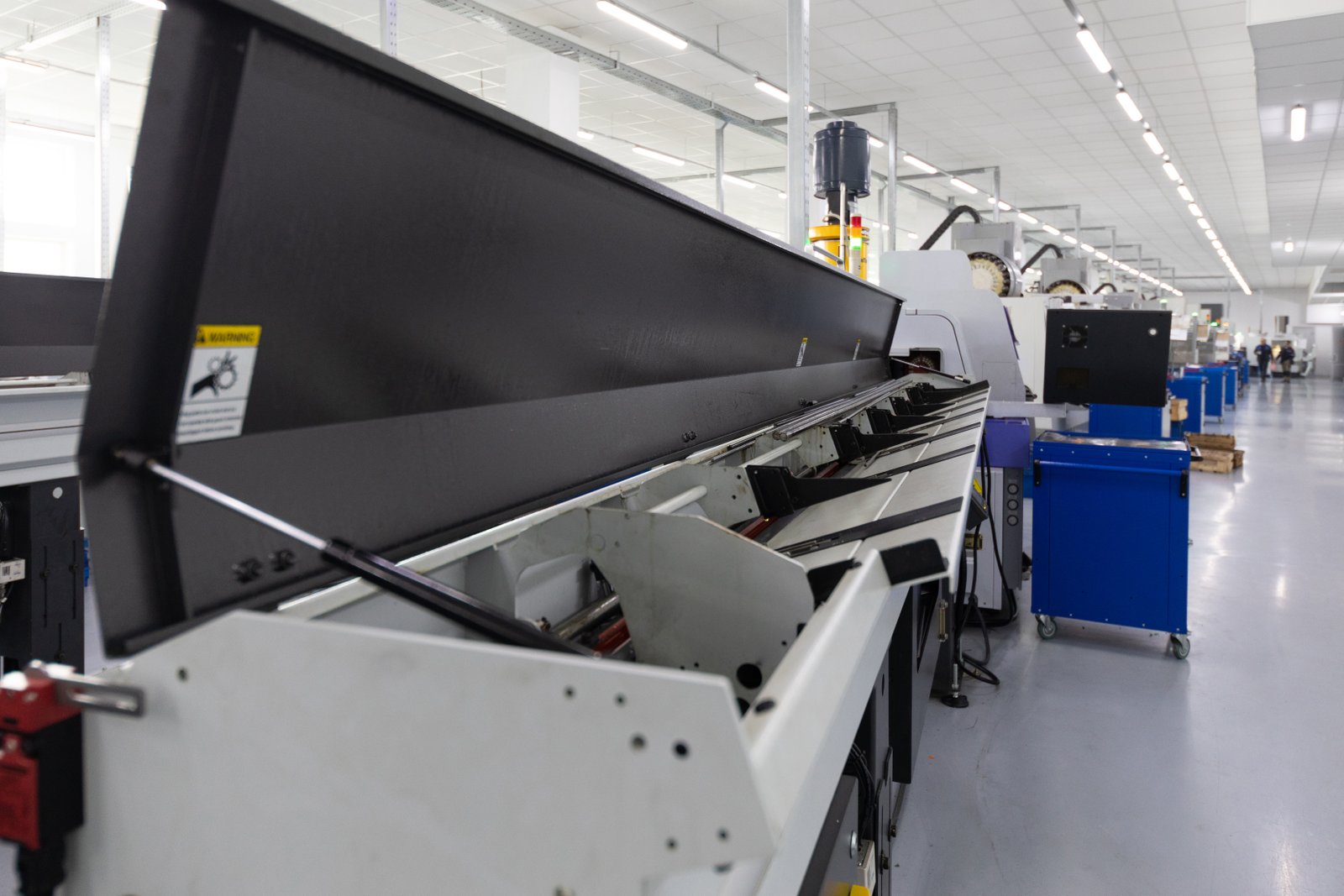
Power System and Electrical Component Verification
The electrical system is the nervous system of any modern metal tube cutting machine, and quarterly maintenance provides a critical opportunity for a comprehensive review. This involves inspecting all electrical cabinets for cleanliness, ensuring connections are tight, and checking for any signs of overheating or arcing. Loose or corroded connections can lead to intermittent power supply, causing unpredictable machine behavior, errors in processing, or even damage to sensitive electronic components. For instance, a loose ground wire can cause electrical noise, leading to inconsistent sensor readings and erroneous control signals.
Furthermore, a thorough inspection of all power cables, motor cables, and communication lines for signs of wear, fraying, or damage is essential. Cables exposed to constant movement or high temperatures can degrade over time, potentially leading to short circuits or complete system failure. At MZBNL, we've designed our machines with robust cable management systems, but even with superior engineering, proactive inspection is key. We advise checking the integrity of circuit breakers, fuses, and emergency stop circuits, ensuring they function correctly to protect both the machine and operators.
This level of electrical scrutiny is vital for ensuring stable power delivery to all components, from the laser resonator to the motors controlling the chucks and gantry. Consistent power protects against voltage fluctuations that can prematurely age electronics and motors. For a business operating 24/7, even a small electrical anomaly can translate into significant downtime and repair costs, impacting profitability and delivery schedules. This proactive approach to electrical health ensures the reliable operation expected by our global clientele.
Advanced Sensor and Control System Calibration
Modern laser tube cutting machines rely heavily on an array of sensors and sophisticated control systems to achieve their high precision and automation. Quarterly maintenance is the ideal time to perform advanced calibration checks on these critical components. This includes verifying the accuracy of position sensors, pressure sensors, temperature sensors, and any other feedback devices that inform the machine's movements and cutting parameters. Inaccurate sensor readings can lead to cumulative errors in cutting dimensions, incorrect material handling, or suboptimal process conditions.
For example, a slight drift in a Z-axis position sensor could lead to the laser focusing slightly above or below the ideal point, resulting in poor cut quality and increased dross, even if the material and laser power settings are theoretically correct. Recalibrating these sensors ensures they provide precise data to the machine's CNC controller, maintaining the integrity of cutting paths and dimensional accuracy. Our smart and digitalized systems at MZBNL are designed for ease of calibration, often guiding operators through the process, but the importance of regular checks cannot be overstated.
This comprehensive calibration also extends to the machine's control software. Verifying that all motion control parameters are within tolerance and that communication between the CNC unit and other modules (like the automatic feeding system or the No-CAD system) is seamless. These checks contribute directly to the machine's ability to maintain high-speed and high-precision cutting, features that are paramount for competitive metal fabrication. Without accurate sensor data and finely tuned control, even the most advanced machine will fail to deliver consistent results, a critical concern for businesses striving for high-quality output.
Proactive Wear Part Replacement Strategy
Quarterly maintenance is the opportune moment to transition from reactive problem-solving to a proactive wear part replacement strategy. Based on manufacturer recommendations, machine usage hours, and the results of previous inspections, certain components are known to have a finite lifespan. These might include specific bearings, seals, filters that aren't replaced weekly/monthly, or even certain electrical contactors. Identifying and replacing these parts before they fail can prevent unscheduled downtime and more extensive damage.
For example, certain types of bearings in the gantry or chucks may have an estimated life of 5,000 operational hours. If your machine runs 40 hours a week, that’s 160 hours a month, meaning these bearings might need replacing every 8-9 months. A quarterly check allows you to track these components and schedule their replacement proactively, during planned downtime, rather than waiting for them to seize up during a critical production run. This is a strategy MZBNL strongly advocates, as it minimizes disruption and maintains consistent performance, particularly for businesses with high production demands like Ahmed Al-Farsi’s.
This proactive approach significantly reduces the risk of cascading failures, where the failure of one small, inexpensive wear part leads to damage to larger, more expensive components. It also minimizes the need for emergency repairs, which are typically more costly and time-consuming. By budgeting for and executing these replacements during quarterly maintenance, businesses ensure continuous, reliable operation, enhancing overall productivity and cost-effectiveness, securing their competitive edge in a demanding market.
Quarterly checks prevent systemic failuresTrue
Quarterly maintenance addresses cumulative wear that routine checks can't detect, preventing major breakdowns.
Weekly checks replace quarterly maintenanceFalse
Weekly maintenance focuses on surface-level issues, while quarterly checks examine core system integrity.
What annual servicing is recommended for a metal tube cutting machine?
Are you consistently pushing your metal tube cutting machine to its limits, but worried about its long-term health and the potential for a catastrophic breakdown? While routine checks keep things running, a year of continuous operation inevitably brings cumulative wear and the potential for hidden issues. If you’re seeking to not just maintain but optimize your machine for years to come, an annual comprehensive service is indispensable.
Annual servicing for a metal tube cutting machine involves a complete system diagnostic, thorough calibration of all axes and laser parameters, comprehensive replacement of key wear components, deep cleaning of the entire machine interior and exterior, and potential software/firmware updates, often performed by certified technicians.This ensures peak performance, maximizes lifespan, maintains safety standards, and significantly reduces the risk of major, unforeseen failures.
As Eric Liu from MZBNL, with 25 years of hands-on experience, I often compare annual servicing to a full physical exam for an athlete: it's not about fixing a current problem, but about optimizing peak performance and preventing future injuries. This thorough check, often done by a specialized MZBNL technician, is a non-negotiable for our 4000+ global enterprise clients4 who rely on our machines for their high-speed, high-precision, and continuous production. For clients like Ahmed Al-Farsi, who values turnkey solutions and proven technology, this annual commitment from MZBNL reinforces his confidence in the machine's longevity and reliability, supporting his long-term business goals and even his interest in becoming a regional distributor.
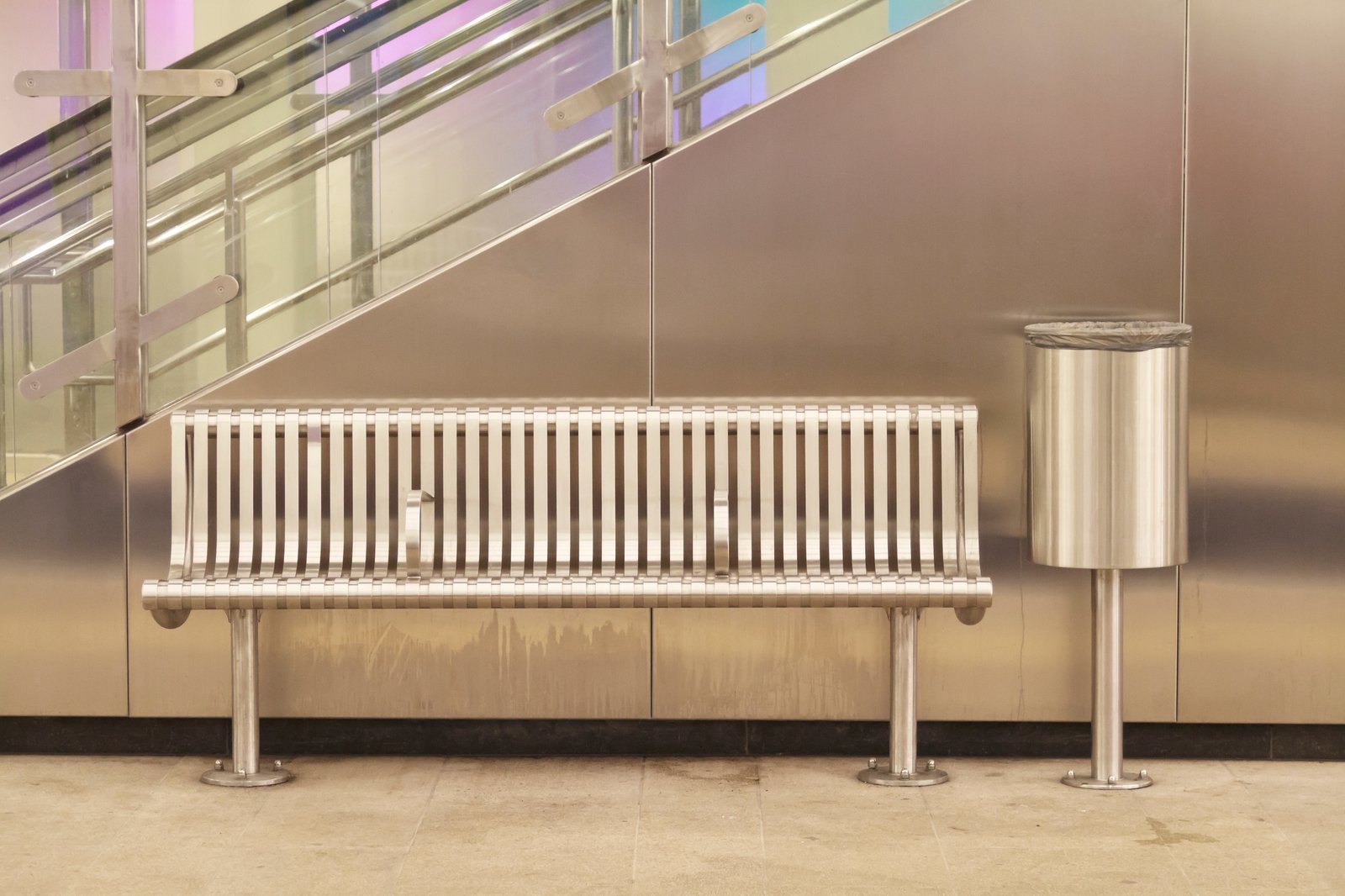
Full System Overhaul and Performance Revalidation
The annual service is the pinnacle of machine maintenance, representing a comprehensive system overhaul rather than just a series of checks. This involves a complete diagnostic analysis of every major component, often requiring partial disassembly to access internal parts for inspection. For the laser system, this could mean checking the alignment of internal mirrors within the resonator, inspecting beam delivery components, and revalidating the laser's power output against original specifications. Over a year of operation, even minor misalignments can accumulate, leading to subtle but persistent reductions in cutting efficiency or beam quality.
Furthermore, a full re-calibration of all axes (X, Y, Z, and rotational axes for tube cutting) is performed using precision instruments. This ensures that the machine's movements are perfectly synchronized and accurate to within micrometers, which is critical for complex geometries and maintaining tight tolerances on finished parts. We’ve found that even a 0.05mm deviation in axis accuracy can lead to significant scrap rates on high-precision automotive components5, costing businesses substantial material and time. MZBNL’s reputation for high-precision cutting machines is built on the understanding that these annual re-validations are paramount to sustained performance.
This overhaul also extends to a detailed inspection of the pneumatic and hydraulic systems, checking for subtle leaks, worn seals, or degraded hoses that might not be visible during less frequent inspections. Every electrical connection is re-torqued, and wiring is inspected for any signs of insulation degradation. This meticulous attention to detail ensures that the entire system is operating as a cohesive unit, maximizing uptime and upholding the machine's original performance capabilities.
Software Upgrades and Data Backup Protocols
Beyond the physical components, the annual service is a crucial time for the machine's digital brain. This involves a comprehensive review of the operating software and firmware, applying any necessary updates or patches. Software updates often include performance optimizations, new features (like enhancements to our No-CAD Operating System), improved diagnostic capabilities, or critical security updates. Failing to update software can leave the machine vulnerable to bugs, operational inefficiencies, or even cybersecurity risks, particularly for machines connected to a network.
During this service, a complete backup of the machine's control parameters, programming data, and operational logs is performed. This serves as a critical safeguard against data loss due to unforeseen issues or system failures. Having a recent backup ensures that if a component needs replacement or the system experiences a corruption, the machine can be quickly restored to its operational state without extensive reprogramming. For a company like Ahmed Al-Farsi’s, which relies on consistent output and seeks automation, the seamless continuity provided by updated software and reliable data backups is invaluable.
My team at MZBNL often uses this opportunity to educate operators on new software features or best practices that have emerged over the year, reinforcing their skills and ensuring they are leveraging the machine's full capabilities. This blend of technical software updates and operator training ensures that the machine remains at the forefront of technological efficiency and operability, improving overall productivity and user experience.
Strategic Component Replacement and Future Planning
Annual servicing is the prime opportunity for strategic component replacement, moving beyond just wear parts to components that have a defined service life or show early signs of potential failure. This might include replacing the laser gas if applicable, internal filters within sealed components, or even specific electrical relays that have accumulated many operational cycles. This proactive replacement of components nearing their end-of-life significantly reduces the risk of unexpected breakdowns during critical production periods. For example, a laser source might have an expected lifespan of 20,000-30,000 hours; an annual check helps determine its current health and estimates when replacement might be advisable, allowing for planned procurement and minimal disruption.
Furthermore, the annual service provides a valuable opportunity for future planning and consultation. Based on the machine's performance over the past year, usage patterns, and any emerging industry trends, our MZBNL technicians can provide tailored recommendations. This might include advice on process optimization, material handling improvements, or even potential upgrades to enhance the machine's capabilities, such as integrating more advanced automation features. For a client like Ahmed Al-Farsi, who is considering becoming a regional distributor, this strategic input is invaluable for long-term growth and competitiveness.
This holistic approach not only extends the machine's operational lifespan but also ensures it remains efficient, productive, and aligned with evolving business needs. It transforms maintenance from a reactive cost center into a strategic investment that maximizes the return on capital equipment, solidifying the machine’s role as a reliable backbone of your fabrication business for years to come.
Annual servicing includes software updatesTrue
The annual service involves reviewing and updating the machine's operating software and firmware to ensure optimal performance and security.
Annual servicing is only for fixing current problemsFalse
Annual servicing is proactive, focusing on optimizing performance and preventing future issues rather than just addressing current problems.
Conclusion
Implementing a rigorous maintenance schedule for your metal tube cutting machine is not just about repairs; it's a strategic investment in peak performance and longevity. From daily checks to annual overhauls, consistent care prevents costly downtime, ensures precision, and maximizes profitability, securing your machine's vital role in your business's success.
-
Discover how optical path problems can impact cutting accuracy and quality ↩ ↩
-
Understand the parameters necessary for efficient cooling of laser components ↩
-
Understand MZBNL's experience and reliability in providing cutting solutions. ↩
-
Explore MZBNL's commitment to reliability and customer service for its global clients. ↩
-
Discover the impact of precision in high-performance automotive part manufacturing. ↩
Have Questions or Need More Information?
Get in touch with us for personalized assistance and expert advice.
